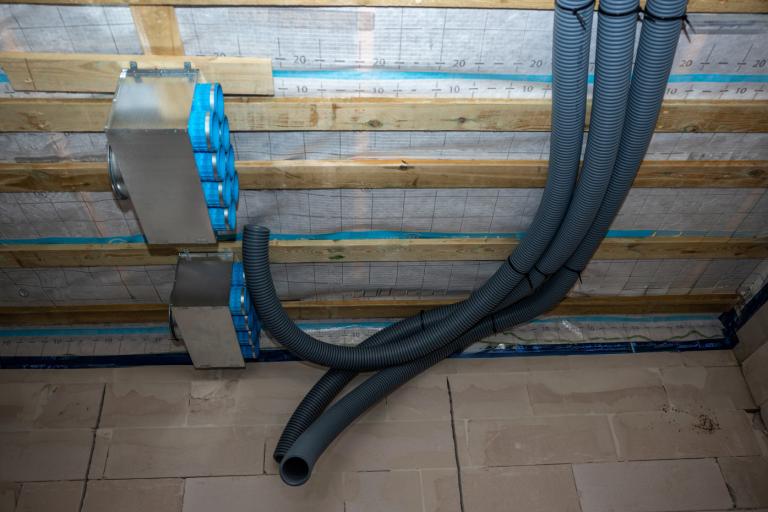We are improving our site by involving residents.
Help us continue to improve by giving your feedback
Ventilation is key for improving the following areas:
Ventilation is especially important in kitchens and bathrooms to stop moisture from building up and causing dampness.
Extractor fans and open windows can help manage this. Bedrooms and other less humid areas also require ventilation.
If your windows have trickle vents, keep them open to allow fresh air circulation.
For better efficiency, single-room mechanical ventilation with heat recovery MVHR systems can reuse heat from extracted air.
For larger retrofit projects, a whole-house MVHR system may be a better option.

Before insulating your loft, ensure the space is dry and in good condition to prevent moisture or mould issues.
Loft insulation will keep your home warmer but will also make your loft colder. This may result in draughts through the loft hatch.
To keep your loft warm, you can carry out the following work:
Most homes use standard loft insulation, which usually comes in rolls of mineral wool. This can be easily laid between or over the floor joists. This is a simple job that can be done with materials sourced from DIY stores or builder's merchants.
If you use your loft for storage, you can install joist extenders to raise the loft boards above the insulation. To make this installation, carry out the following tasks:
The Centre for Sustainable Energy has easy to follow advice about insulating your home to improve energy efficiency.
The Energy Saving Trust provides a comprehensive guide to roof and loft insulation from installation to saving money on your energy bills.
NEW Help improve this site by giving feedback Show Hide
Send feedback directly to the content team using our website feedback form
You can also join our user research group to receive invites to activities and surveys to help shape future improvements to the site.